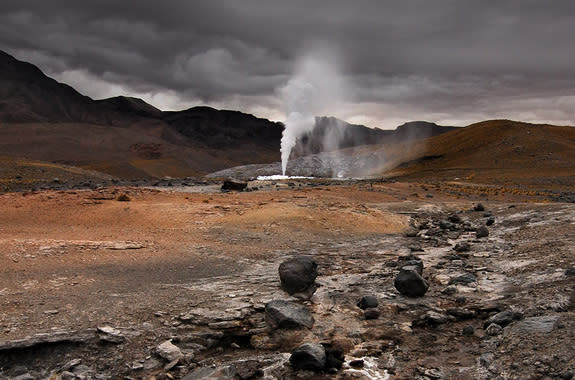Origin-of-Life Story May Have Found Its Missing Link
|
Shoutbox
Hunny: HEADS UP: The Magazine got messed up by an update. So if it seemed not right when you saw it, SEE IT AGAIN NOW! It's fixed. Your work is well represented!  Nov 14, 2024 22:18:24 GMT
*
Nov 14, 2024 22:18:24 GMT
*
 Nov 14, 2024 22:18:24 GMT
*
Nov 14, 2024 22:18:24 GMT
*
Hunny: Deyana, we miss you! Come see the magazine (you're in it!) And all the new posts.. *sends chi, to make you need to come* vzshzzzzzzz!!!  biglinmarshall.proboards.com/thread/7917/bits-pieces-magazine-issue-2024
Nov 4, 2024 17:39:29 GMT
*
biglinmarshall.proboards.com/thread/7917/bits-pieces-magazine-issue-2024
Nov 4, 2024 17:39:29 GMT
*
 biglinmarshall.proboards.com/thread/7917/bits-pieces-magazine-issue-2024
Nov 4, 2024 17:39:29 GMT
*
biglinmarshall.proboards.com/thread/7917/bits-pieces-magazine-issue-2024
Nov 4, 2024 17:39:29 GMT
*
Hunny: Ah! Domestic Goddess has joined us as well. Hello love! How's every little thing?
Nov 3, 2024 13:19:35 GMT
trubble: Haha! well I guess then you will all have to imagine you are at a seance and I'm the invisible spirit haunting you - knock three times if you can see my posts - lol!
Nov 2, 2024 21:29:08 GMT
Hunny: It's not your fault you can't find it. It's not there! (Only possible reason would be your location.) So..I can't un-tick it either.
Nov 2, 2024 17:19:54 GMT
*
trubble: It does not say invisible anywhere for me, I'm on the right tab I think. If you can switch it for me, please do. If not, oh well, doesn't matter really.  thanks
Nov 2, 2024 17:09:05 GMT
thanks
Nov 2, 2024 17:09:05 GMT
 thanks
Nov 2, 2024 17:09:05 GMT
thanks
Nov 2, 2024 17:09:05 GMT
Hunny: go to your profile / click 'edit' (upper right) / click 'privacy' tab.. where it says 'invisible' tick no
Nov 2, 2024 15:12:40 GMT
*
trubble: I've forgotten how to change my settings so I stop being invisible?
Nov 2, 2024 14:51:09 GMT
trubble: Hi Hunny  you are as lovely and kind as ever. GOOD! Nice to see you.
Nov 1, 2024 22:48:27 GMT
you are as lovely and kind as ever. GOOD! Nice to see you.
Nov 1, 2024 22:48:27 GMT
 you are as lovely and kind as ever. GOOD! Nice to see you.
Nov 1, 2024 22:48:27 GMT
you are as lovely and kind as ever. GOOD! Nice to see you.
Nov 1, 2024 22:48:27 GMT
Hunny:  Trubble! Hello old friend. I was just reading the conversation you and I had years ago here... Geez. Great to see you!
Trubble! Hello old friend. I was just reading the conversation you and I had years ago here... Geez. Great to see you!  Nov 1, 2024 16:56:54 GMT
*
Nov 1, 2024 16:56:54 GMT
*
 Trubble! Hello old friend. I was just reading the conversation you and I had years ago here... Geez. Great to see you!
Trubble! Hello old friend. I was just reading the conversation you and I had years ago here... Geez. Great to see you!  Nov 1, 2024 16:56:54 GMT
*
Nov 1, 2024 16:56:54 GMT
*
Hunny: It's you lot who did the great job!  I bb/coded and added filler. But it's what you each wrote which was wonderful! *applauds*
Oct 26, 2024 18:03:11 GMT
*
I bb/coded and added filler. But it's what you each wrote which was wonderful! *applauds*
Oct 26, 2024 18:03:11 GMT
*
 I bb/coded and added filler. But it's what you each wrote which was wonderful! *applauds*
Oct 26, 2024 18:03:11 GMT
*
I bb/coded and added filler. But it's what you each wrote which was wonderful! *applauds*
Oct 26, 2024 18:03:11 GMT
*
Hunny: THE MAGAZINE IS PUBLISHED! --> biglinmarshall.proboards.com/thread/7917/bits-pieces-magazine-issue-2024  Oct 23, 2024 18:34:05 GMT
Oct 23, 2024 18:34:05 GMT
 Oct 23, 2024 18:34:05 GMT
Oct 23, 2024 18:34:05 GMT
Hunny: THE U.S. ELECTION: biglinmarshall.proboards.com/thread/7894/presidential-election-2024?page=1&scrollTo=77178
Oct 23, 2024 18:33:42 GMT
Hunny: Before you criticize someone, you should walk a mile in their shoes.
That way, when you criticize them, you are a mile away from them
and you have their shoes. Aug 2, 2024 11:10:48 GMT
*
Aug 2, 2024 11:10:48 GMT
*
That way, when you criticize them, you are a mile away from them
and you have their shoes.
 Aug 2, 2024 11:10:48 GMT
*
Aug 2, 2024 11:10:48 GMT
*
Hunny: Oh yes, of course! Just a tick, I'll pm you the link, where to post submissions...
Jul 31, 2024 21:30:17 GMT
*






 yay!
yay!